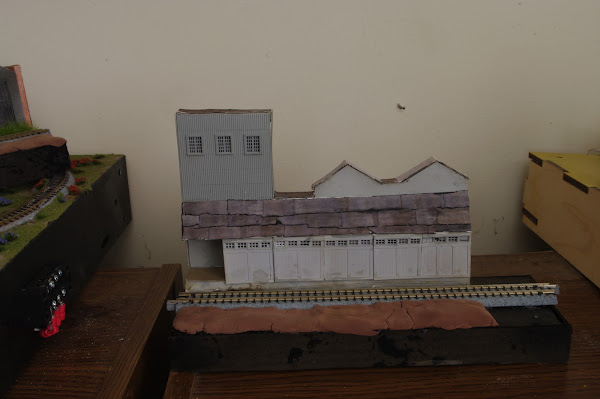Atlas has been re-releasing older N models with ESU LokSound 5 in its Gold series. ESU LokSound is a good product, but ESU's own documentation is hard to work with, while Atlas provides no documentation at all with this loco, ESU or otherwise. This is different from Walthers, which at least provides basic documentation for rhe ESU CVs in its Mainline and Proto sound equipped locos.
The detail on the Atlas body is generic. The model is well painted for the late SP gray and scarlet scheme, but the number, 4355, makes it an SD9E. These were rebuilt by SP beginning in the mid-1970s, with small details, including air filters, revised light packages, and a hump in the hood behind the cab, that varied depending on when the loco came out of the shop as well as later modifications. Because the Atlas model is older, "generic" tooling, it doesn't have any specific SD9E details other than the number and the assignment to Eugene stenciled on the cab.
This is acceptable given the model's price, which would be considerably higfher if, like Broadway Limited or Scale Trains, it had road-specific details. In this, it's comparable to the old HO Athearn bluebox SD9, which despite its wide hood continues to be an acceptable layout-quality model.
ESU and Atlas provide the loco with certain CVs preset that diverge from other manufacturers. In particular, the engine startup-shutdown is F8, unlike the F9 other manufacturers use. F9, on the other hand, is "drive hold", a feature unique to ESU. If you press F9 by mistake expecting to startup the sound, this can leave the loco stuck in not moving until you think to press F9 again, which is confusing.
ESU also sets default values to CV3 and CV4, acceleration and deceleration, unlike other suppliers. This can make MUing other manufacturers' locos difficult, and as a longtime DC user bvefore I went to DCC, I like the feel of immediate throttle response. I set CV3 and CV4 to 0.
ESU has another unique feature, prime mover delay, which delays acceleration while the diesel engine sound spools up. Again, this makes it difficult to MU an ESU equipped loco with one from other DCC suppliers, and I find the delay in throttle reponse annoying. To get rid of this, I set CV 124 to 16.
Finally, I tested the horn using F2. It is factory set for a single-tone blat. Atlas doesn't provide documentation for other options, but browsing the web, I found that if you e-mail support, they can send you a list of their CVs for the SD7/9 model. I did this and got a list within an hour or so. From their documentatoin:
CV163=0 Leslie A-125
CV163=1 Leslie A-200
CV163=2 Leslie S-2M
CV163=3 Leslie S-3K
CV163=4 Leslie S-3L
CV163=5 Leslie S-5T
CV163=6 Nathan M3RT1
CV163=7 Nathan M3H
CV163=8 Nathan M5
CV163=9 Nathan P5 (Old Cast)
CV163=10 Nathan P5R24
CV163=11 Nathan P3
CV163=12 Nathan P3-R4
CV163=13 Nathan P5A
CV163=14 Wabco E-2
SP used Nathan P3s, so I set CV163=11. This worked fine, and the P3 sound is great. Unfortunately, the "generic" horn detail on the body is maybe a Wabco E-2 "blat" horn. There used to be SP style aftermarket N details available, but I think they're much harder to find these days.



















































